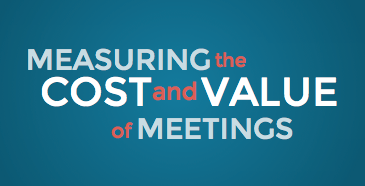Infographic: 7 keys to successful client meetings online
Project managers with training and experience know that there’s more to running a project than simply writing down some dates and hounding people for status updates.
Scrum masters and Agile coaches who have worked with more than one kind of team also know there’s a big difference between getting that certificate and actually knowing how to do the job well.
The same holds true for meetings. There are specific, known and thoroughly researched methods for making sure a meeting works.
Once you know and use these techniques, you can spot an amateur’s meeting a mile away, and you’ll cringe as you watch all the missed opportunities for meaningful conversation and clear results go whistling past.
We recently conducted a survey of professionals in sales, marketing, and project management roles. We asked about the kinds of meetings people hold, whether their teams know and use basic best practices, and how regularly they succeed in achieving their goals.
The results showed groups having mixed success. They use some strategies (such as sending out an agenda in advance) some of the time, and not surprisingly, have meetings that successfully stay on time, on target, and achieve their goals only some of the time.
When you see how very few companies have training or standards in place for how to run a good meeting, this mediocre performance makes sense.
Just as untrained project managers can succeed with a great team and luck, it takes a trained professional to make the more challenging projects go. Consistently successful meetings also require the application of some basic meeting techniques that you can learn and share with your teams.
The 7 keys to successful client meetings included in this infographic give you a place to start.
Project managers with training and experience know that there’s more to running a project than simply writing down some dates and hounding people for status updates.
Scrum masters and Agile coaches who have worked with more than one kind of team also know there’s a big difference between getting that certificate and actually knowing how to do the job well.
The same holds true for meetings. There are specific, known and thoroughly researched methods for making sure a meeting works.
Once you know and use these techniques, you can spot an amateur’s meeting a mile away, and you’ll cringe as you watch all the missed opportunities for meaningful conversation and clear results go whistling past.
We recently conducted a survey of professionals in sales, marketing, and project management roles. We asked about the kinds of meetings people hold, whether their teams know and use basic best practices, and how regularly they succeed in achieving their goals.
The results showed groups having mixed success. They use some strategies (such as sending out an agenda in advance) some of the time, and not surprisingly, have meetings that successfully stay on time, on target, and achieve their goals only some of the time.
When you see how very few companies have training or standards in place for how to run a good meeting, this mediocre performance makes sense. Just as untrained project managers can succeed with a great team and luck, it takes a trained professional to make the more challenging projects go. Consistently successful meetings also require the application of some basic meeting techniques that you can learn and share with your teams.
The 7 keys to successful client meetings included in this infographic give you a place to start.




